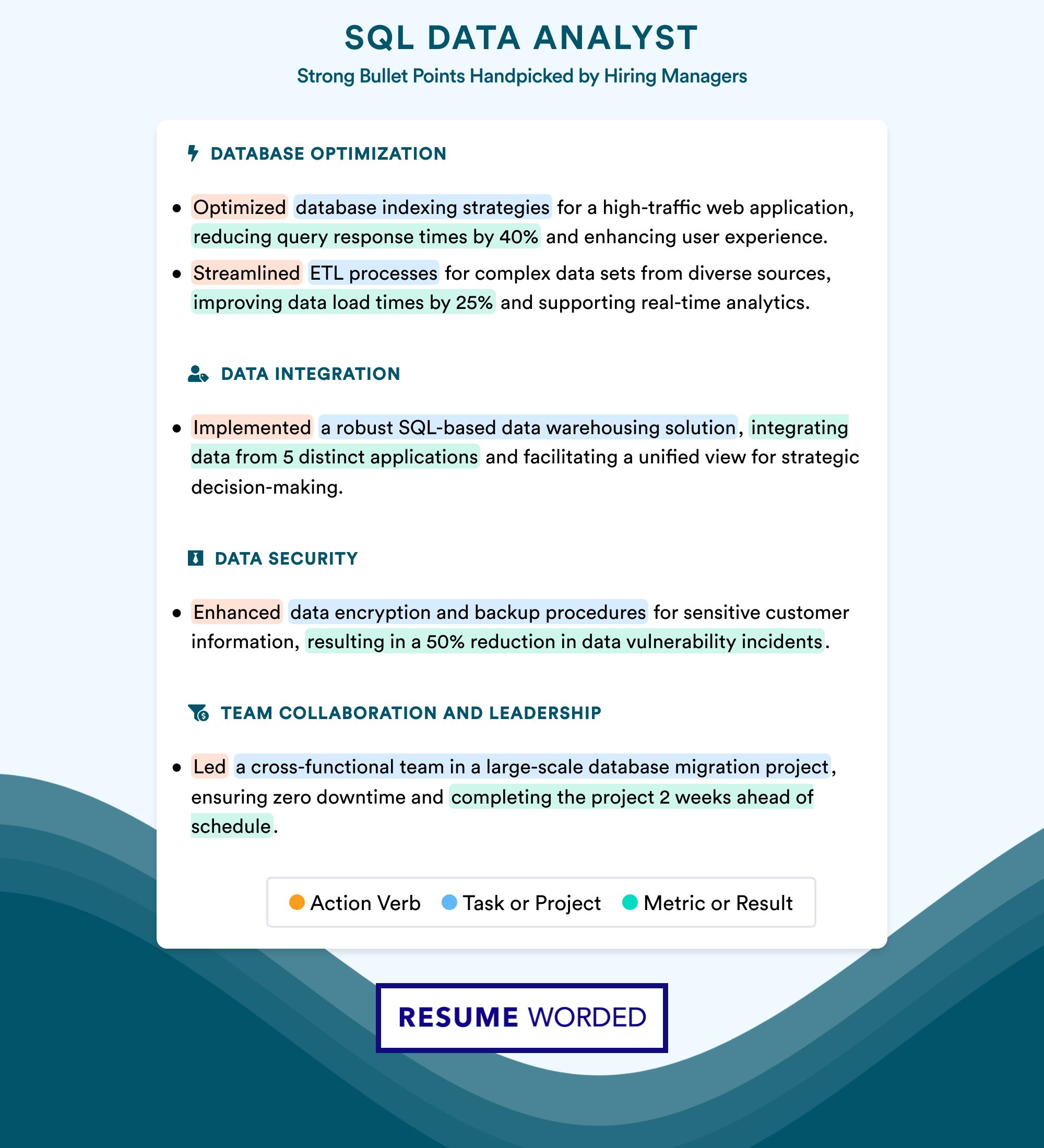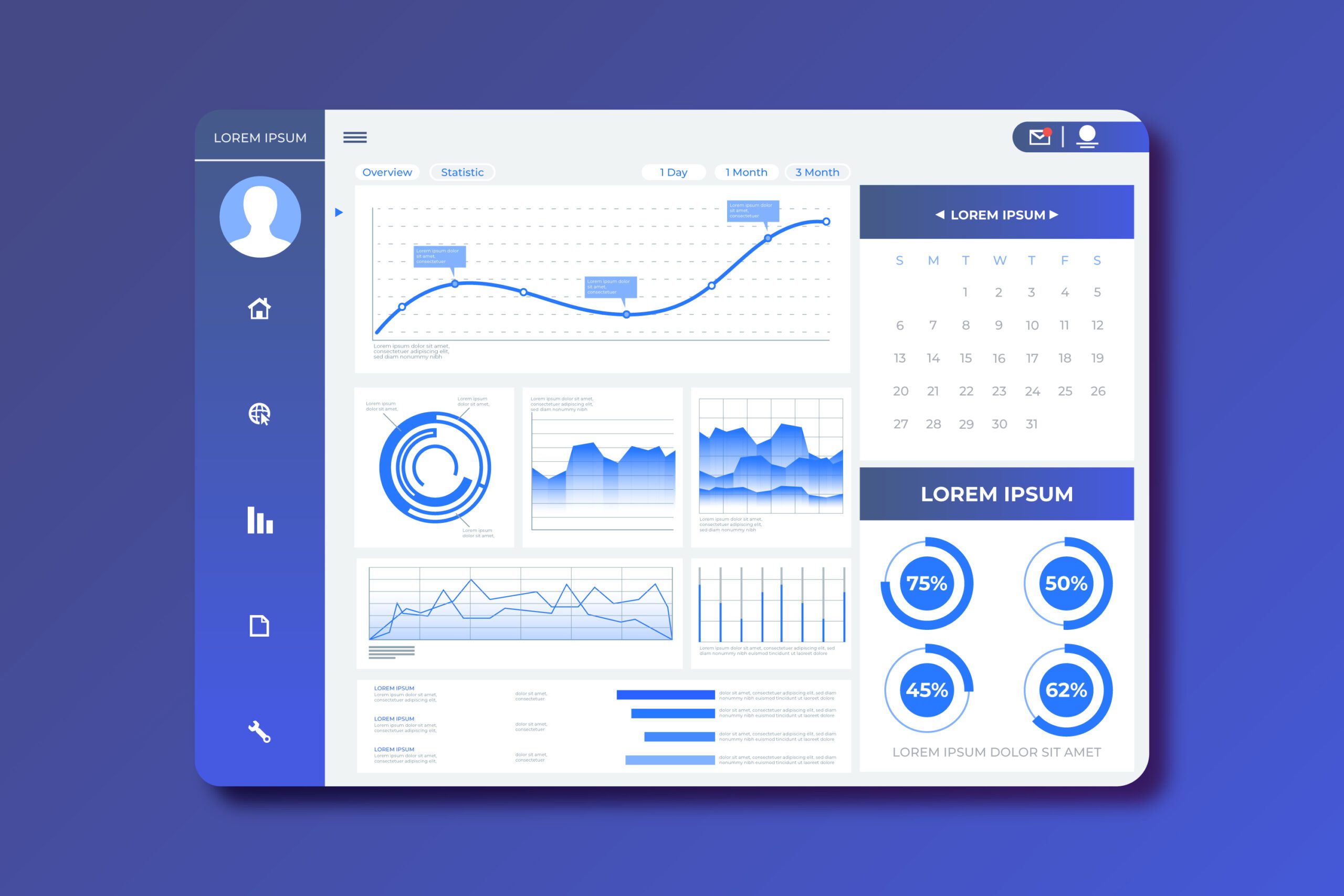Optimizing SQL queries enhances data retrieval speed and ensures efficient database performance. It’s crucial for large-scale data science projects.
Efficient SQL queries are vital for handling vast datasets in data science projects. Proper optimization not only speeds up data retrieval but also minimizes computational costs. Understanding indexing, query structure, and execution plans is essential. Simple techniques like avoiding unnecessary columns and using joins effectively can make a significant difference.
Employing best practices in SQL ensures that data processing is smooth and resources are utilized efficiently. Mastering these techniques is crucial for any data scientist looking to derive insights from large datasets swiftly. This foundation in SQL optimization paves the way for more advanced data analysis and machine learning tasks.

Credit: enhancv.com
Introduction To Sql Optimization
Efficient queries save time and resources. They make data retrieval faster and reduce server load. This is vital for large datasets. Good queries help in quick decision-making. They also improve the user experience. Fast data access is important for data science projects. Efficient queries also help in cost savings. They reduce the need for expensive hardware.
Using SELECT can slow down your query. Always select only the columns you need. Joins can be complex and slow. Use them wisely. Indexes speed up searches but slow down inserts. Use indexes on frequently searched columns. Subqueries can also slow down queries. Try to avoid them. Unnecessary conditions in WHERE clause should be avoided. They make queries slow.
Indexing Strategies
The right index can speed up your SQL queries. B-tree indexes are good for range queries. Hash indexes work well for equality checks. Bitmap indexes help with multiple values. Choosing wisely can make queries faster.
Proper indexing can reduce query time. Indexes organize data for quick access. They help the database find rows faster. Poor indexing can slow down performance. Always test and optimize your indexes.
Query Execution Plans
Execution plans show how SQL queries run. They help find inefficient parts of queries. Look for high-cost operations in the plan. These might be table scans or joins without indexes. Use indexes to speed up these parts. Check the order of operations to ensure it makes sense. Adjust queries for better performance.
Bottlenecks slow down queries. Find them by looking at slow-running parts. Use tools to measure query times. Look at CPU and memory usage. High usage points to bottlenecks. Focus on large data sets and complex joins. Simplify these or use indexes. Monitor query performance regularly. This helps keep queries fast.
Advanced Sql Techniques
Window functions provide great power. They allow you to perform calculations across a set of table rows. These rows are somehow related to the current row. Row numbering, ranking, and running totals become easy with window functions. They do not collapse rows into a single output row. Instead, they keep the original row count.
Common Table Expressions (CTEs) help to simplify complex queries. They make your SQL code more readable. CTEs allow you to break down a query into smaller parts. This makes debugging easier. They also support recursive queries. Recursive CTEs are useful for hierarchical data. CTEs only exist during the execution of the query.
Optimizing Joins
There are several types of joins in SQL. Inner Join returns rows with matching values in both tables. Left Join returns all rows from the left table and matched rows from the right table. Right Join returns all rows from the right table and matched rows from the left table. Full Outer Join returns rows when there is a match in one of the tables. Each join type has its specific use cases.
Use the most specific join type needed. Avoid using full joins when not required. Always index columns used in joins. This helps in speeding up query performance. Filter data before joining tables. Use EXPLAIN to understand query execution plans. Minimize the number of joins in a single query. Joining too many tables can slow down query performance.

Credit: www.udacity.com
Reducing Data Volume
Optimizing SQL queries can significantly reduce data volume in data science projects. Efficient queries streamline data processing, enhancing overall performance.
Filtering Data Early
Filter data as early as possible. This reduces the amount of data processed later. Use the WHERE clause to limit rows. Include only the necessary columns. This makes queries faster and more efficient.
Using Subqueries Effectively
Subqueries help break complex tasks into smaller parts. Place subqueries in the FROM clause. This allows for intermediate results. Avoid nesting too many subqueries. This can slow down the query.
Database Configuration
Database settings are crucial for performance. Adjusting memory limits can enhance query speed. Optimizing cache sizes ensures faster data retrieval. Set appropriate timeout values to avoid long waits. Ensure proper indexing for quick data access. Use query optimization tools to find bottlenecks.
Good hardware boosts database performance. Use fast processors for quick calculations. Ensure ample RAM for handling large datasets. Solid State Drives (SSDs) offer faster read/write speeds than HDDs. Network speed also affects database access times. Keep hardware well-maintained to prevent slowdowns.

Credit: resumeworded.com
Real-world Case Studies
One company reduced query times by 60%. They used indexing on key columns. This made searches faster. Another team rewrote complex queries. They broke them into smaller parts. This improved performance by 40%. One more example is using caching. It helped in reducing load times by 70%. Teams should always test their queries. Testing shows what works best.
Simple changes can make a big difference. Indexing is very useful. Keep queries as simple as possible. Break down complex queries into smaller ones. Always test and monitor. This ensures the best performance. Caching can save a lot of time. These tips help in real projects.
Frequently Asked Questions
How To Optimize Sql Queries Performance?
Optimize SQL queries by indexing columns, using JOINs efficiently, avoiding SELECT *, writing efficient WHERE clauses, and analyzing query execution plans.
How To Prepare Sql For Data Science?
Learn SQL basics, including SELECT, INSERT, UPDATE, DELETE. Practice joins, subqueries, and indexing. Use datasets for real-world practice.
How To Optimize Sql Query For Millions Of Records?
Optimize SQL queries with indexing, proper joins, and query plans. Use partitioning and limit result sets. Avoid SELECT *.
How Can You Use Sql Queries To Grow As A Data Analyst?
Master SQL to analyze data efficiently. Create complex queries to extract actionable insights. Automate reports for better decision-making. Enhance your skills with SQL to become a proficient data analyst.







